The Suzuki Swift is back in Australia, with the third generation of the Japanese car maker’s global light hatch (the Swift name extends further into the past, but only in select markets) now on sale locally, priced from $16,990 drive-away.
The exterior is a fresh take on the outgoing Swift’s already-distinctive form, and clothes a chassis that isn’t just all-new, but is both lighter and stronger than before. Dimensions have also been massaged to improve interior space, netting more rear headroom and putting more space between the front occupants.

And that’s despite the Swift shrinking by 10mm in overall length, and dropping 15mm in overall height. However, the new version is also 40mm wider than before and has 20mm more distance between the front and rear axles, thus allowing Suzuki to expand the passenger compartment
Boot space has also grown to 242 litres of total room and with a 50mm longer boot floor giving it a 32 litre advantage over the outgoing Swift.
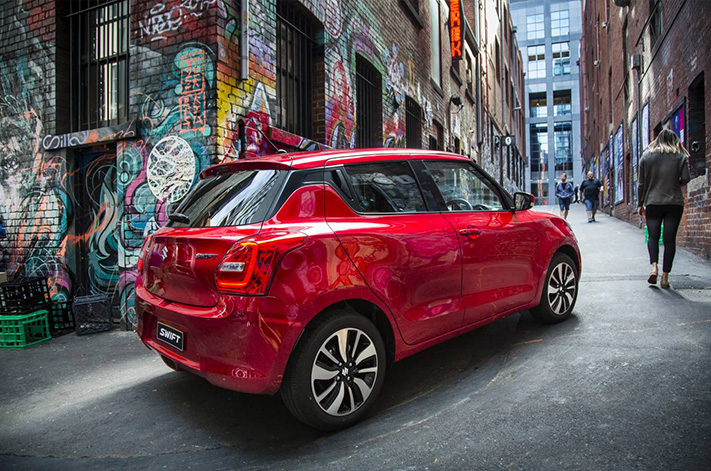
Exterior styling is evolutionary, with a more rounded design and ‘floating’ C-pillar motif, merged with Swift hallmarks such as a blacked-out A-pillar and large triangular headlamps. Wheel sizes range from 15 inch steel items on the base model, to 16-inch polished alloys on the range-topping Swift GLX. The GLX also receives black headlamp bezels, rather than chrome finish on the rest of the range.
The 2017 Swift range encompasses four models, with two engines and three transmissions spread among them. The lower-grade Swift GL, GL Navigator and GL Navigator with Safety Pack are powered by a 1.2-litre naturally-aspirated inline four with 66kW and 120Nm, with the GL sporting a five-speed manual and the GL Navigator and GL Navigator Safety Pack gaining a CVT automatic.
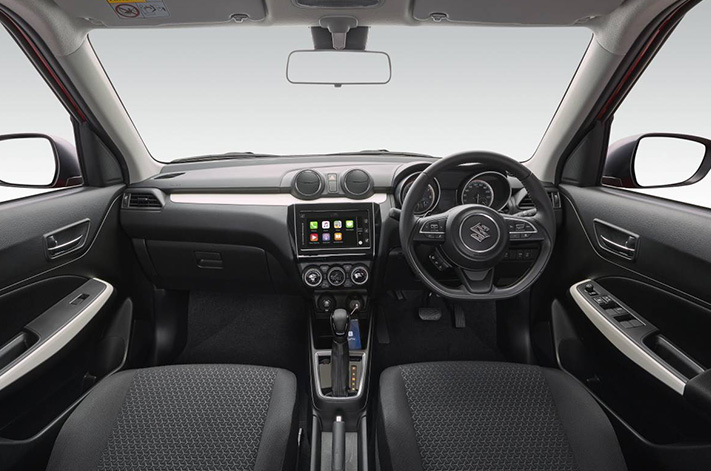
The Swift GLX Turbo is powered by a more muscular 1.0-litre three-cylinder turbo, delivering 82kW and 160Nm to the front wheels via a six-speed automatic.
Official fuel consumption for the manual-equipped GL 1.2L is 4.6L/100km, while the CVT is slightly thirstier at 4.8L/100km on the combined cycle. The turbocharged Swift GLX Turbo, meanwhile, consumes a claimed average of 5.1L/100km.
Features
Swift GL
- Cruise control
- Power windows
- Daytime running lights
- Privacy glass
- Cloth upholstery
- Bluetooth telephony and audio streaming
- USB audio input
- Six airbags
- ABS, EBD, brake assist, stability control
Swift GL Navigator (in addition to above)
- 7-inch colour touchscreen display with satellite navigation, Apple CarPlay, Android Auto, Bluetooth and AM/FM radio
- Reversing camera
- Front foglamps
Swift GL Navigator with Safety Pack (in addition to above)
- Autonomous Emergency Braking
- Adaptive cruise control
- Weaving (fatigue) alert
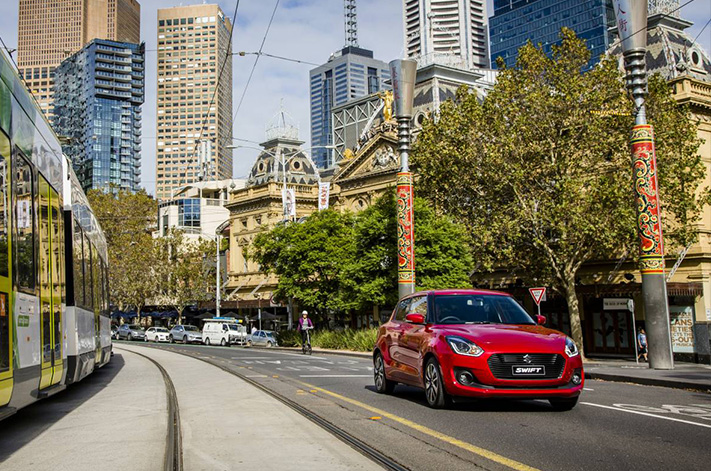
Swift GLX Turbo (in addition to above)
- Climate control
- Keyless entry and ignition
- LED headlamps
- High beam assist
PRICING
- Swift GL manual – $15,990 ($16,990 drive-away)
- Swift GL Navigator auto – $17,990 ($17,990 drive-away)
- Swift GL Navigator with Safety Pack auto – $18,990 ($19,190 drive-away)
- Swift GLX auto – $22,990 ($22,990 drive-away)
The $17K-$25K bracket the covers the middle and upper ranges of Australia’s light-car segment.
It’s for buyers looking for more creature comforts rather than settling for the bare-bones specification, and the additional investment can prove to be worthwhile through slightly superior resale value.
If you’re keen to know which are the three best cars in the class for overall value, WhichCar’s sister brand Wheels got busy calculating key ownership factors and costs.
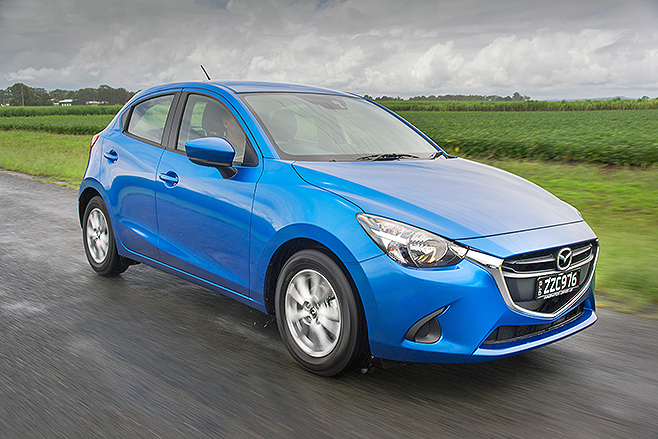
Wheels’ Gold Star Car awards scored cars out of 100. Real costs comprising three-year depreciation and a year’s insurance and fuel expenses accounted for 80 per cent of the score, with 10 per cent each for servicing costs and warranty.
The upshot was victory for one of the most popular light cars – the Mazda 2, here in mid-range Maxx guise.
It asks another $2700 over the base-model Neo, though counters with a marginally better retained value after three years (52 versus 51 per cent).
There are also more goodies on board, plus the Maxx adopts a different tune of the Mazda 2’s 1.5-litre four-cylinder engine. There’s a little extra power (up 2kW to 81kW), while fuel consumption improves from 5.4 to 5.2 litres per 100km.

That efficiency can’t be matched by either of the other two podium-sitters here, the Suzuki Swift GL Navigator (5.5L/100km) and now superseded 2016 Kia Rio S Premium (5.7L/100km).
The Navigator trim grade adds $1500 to the regular Swift GL, though brings desirable additions including foglights, a touchscreen display and, as the name suggests, satellite navigation.
Servicing intervals fall three months short of the 12-month industry average, though the Suzuki boasts the strongest resale among our trio – an impressive 55 per cent.
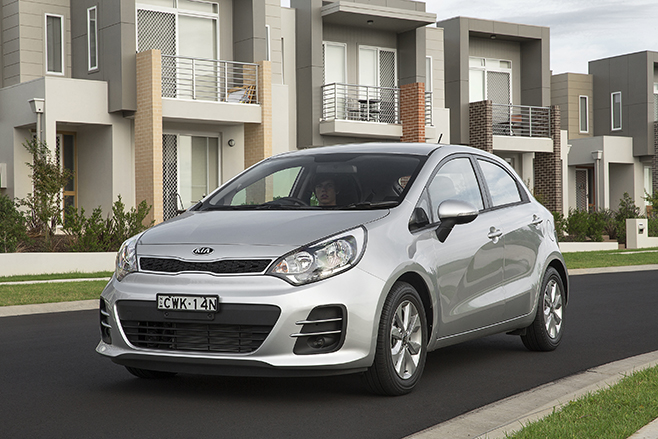
A new-generation Suzuki Swift will be released in June 2017.
The Kia Rio S’s case for a higher placing was hurt by a desire to gulp more unleaded petrol than its closest rivals here when comparing manual gearboxes, as well as the lowest resale value (46 per cent).
However, the Rio is cheap to insure and owners benefit from Kia’s brilliant seven-year factory warranty.
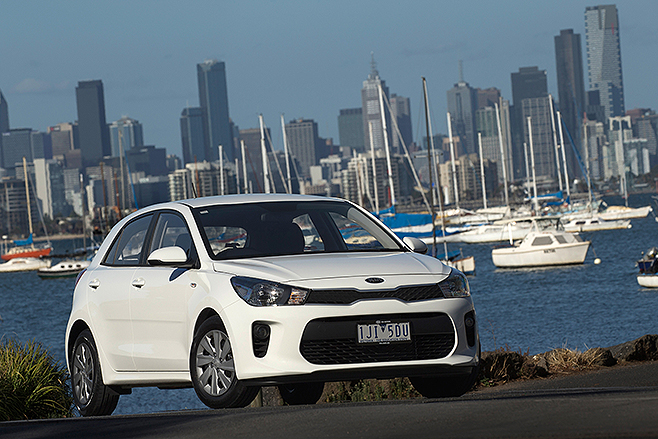
The S Premium model has since been discontinued with the introduction this year of an all-new Kia Rio model. The new Rio has sharper Euro-styling and more premium interior but slightly higher fuel consumption and is priced from $16,990, with S, Si and SLi trim grades.